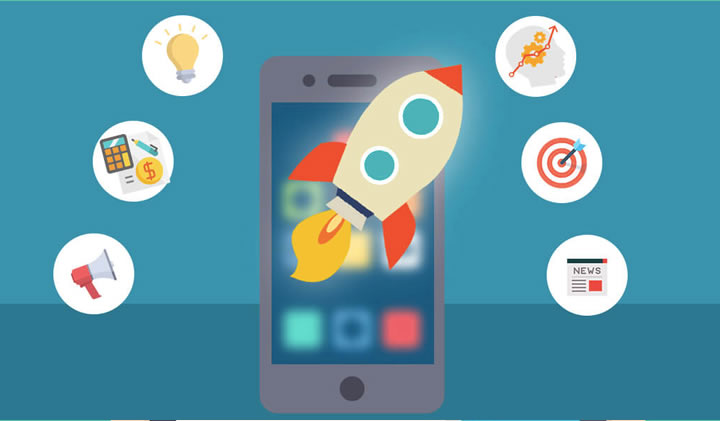Whether you want to develop a fintech mobile application or build a home app – the process itself can be both challenging and exhilarating at the same time.
The fulfillment received from effectively bringing a product to the market that can help change lives is truly vitalizing and life-changing.
While there may be several challenges that you might face while launching your first app, this is your definitive guide to help get you through.
This guide covers all of the precautions, challenges, and solutions that you need to consider while taking the plunge and launching your first app. Here are just some of the things to keep in mind.
Challenges
These are some of the main challenges you are likely to face while launching your first app:
1. Cost-Effectiveness
When launching your first app, keeping costs down is one of the single biggest challenges for developers worldwide. Between hiring developers, designers, programmers, and managers, you can quickly accrue plenty of expenses.
The more you can save while launching your application, the more you can redirect towards the management and scaling of your company.

For this reason, remaining cost-effective is one of the biggest challenges that app developers face today while launching an application.
2. Scalability
When it comes to launching an application, being able to scale and grow is one of the biggest challenges companies face.
Many companies find it difficult to scale their operations to expand their business. This can be for a variety of reasons that do not have to be limited to cost.
While it is true that it takes a considerable amount of resources to scale a business, you also need to have adequate skilled labor and the market demand to match.
3. Marketing
Once you have gone ahead and created your application, marketing is your next challenge. It is no good to simply create and launch an app if only to have nobody hear about it and try it out.
Marketing is how you will effectively bring your product to the market and demonstrate its use case. It is the point where your customers find value from your application and find themselves desiring it.
Successful marketing means that you will be able to grow your business and expand your reach to help new customers around the world. For this reason, marketing your app is one of the biggest challenges for developers when launching an application.
4. Customer Support
It can be hard to keep up with queries from customers, especially when you have a limited team and lack adequate resources to scale. It takes large amounts of resources to hire representatives who can tackle user’s issues and maintain customer satisfaction.
A simple solution is to outsource your customer support requirements to a third party to ease your workload.
Besides this, you could even consider using a live chatbot on your website that can respond to customers and answer frequently asked questions without the need for human intervention.
Solutions
Here are some solutions to the challenges you might face while launching your first app:
1. Outsourcing
Outsourcing is undeniably one of the best solutions for launching an app cost-effectively. It can also help you handle customer support and other vital business tasks.
To lower your overall costs and stay competitive in the market, one of the most tried and tested practices in business is outsourcing. While you do not need to outsource the entirety of your project, certain processes can be.
For example, you could outsource the graphical UX design, chatbot, or mainframe coding of your application to a third-party to cut down on costs and save time.
2. Budgeting
Creating a comprehensive budget for the entire process of developing and launching your app can help you stay ahead financially.
With all of the mounting costs that it takes to launch an application, things can get expensive quickly if you do not stay on top of your expenses with a budget.
Having a clear idea about the resources you possess, how much you want to spend, and how much various things cost is a great way to keep your finances in check. It will help you avoid unnecessary spending and also keep track of where your money is going.
3. Pre-Planning
When it comes to building a software platform, meticulous pre-planning is essential. You never want to be caught off guard when it comes to updates, feedback, or anything related to the development of your application.
Remember, failing to plan is planning to fail. When it comes to your app launch, careful and thorough planning to ensure that nothing slips through the cracks is one of the best ways to ensure you have a successful app launch.
Precautions
Beware! These are some precautions you should take while developing your first app:
1. Plagiarism
One of the biggest precautions to take when launching your first app is to avoid plagiarism. Though you might not intend to copy someone else’s idea, it can still be illegal to have certain implementations in your application that are copyrighted by others.
When developing and launching your first app, make sure you do your due diligence so that none of the content within your application is copied from a third party.
2. Privacy Concerns
Users value their privacy highly when using mobile applications. To avoid any pushback from users about the privacy of your application, it is crucial to make it as robust as possible.
The Bottom Line
Developing your first app can be a thrilling experience. Along with this, launching your first app will come with challenges like managing costs, performing effective marketing, and providing quality customer support.
For these challenges, there are solutions like creating a budget and performing meticulous preplanning. By doing so, you will make sure that you stay ahead and avoid common mistakes that are commonly made in the industry.
Users have many concerns such as safety and privacy while downloading and using applications on their mobile phones. To avoid unwanted launch issues, always make sure that you take all precautions to safeguard your user’s privacy.

